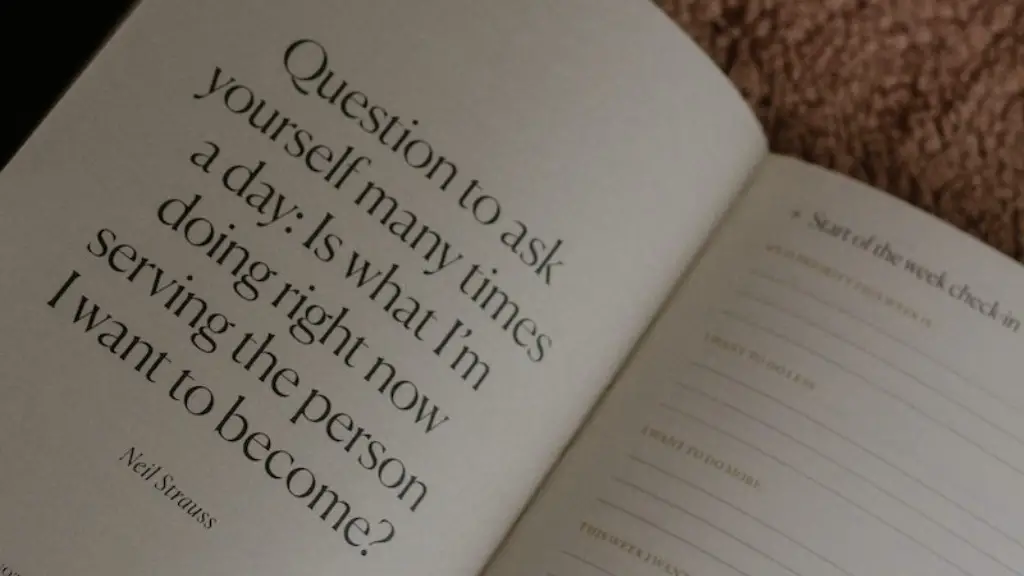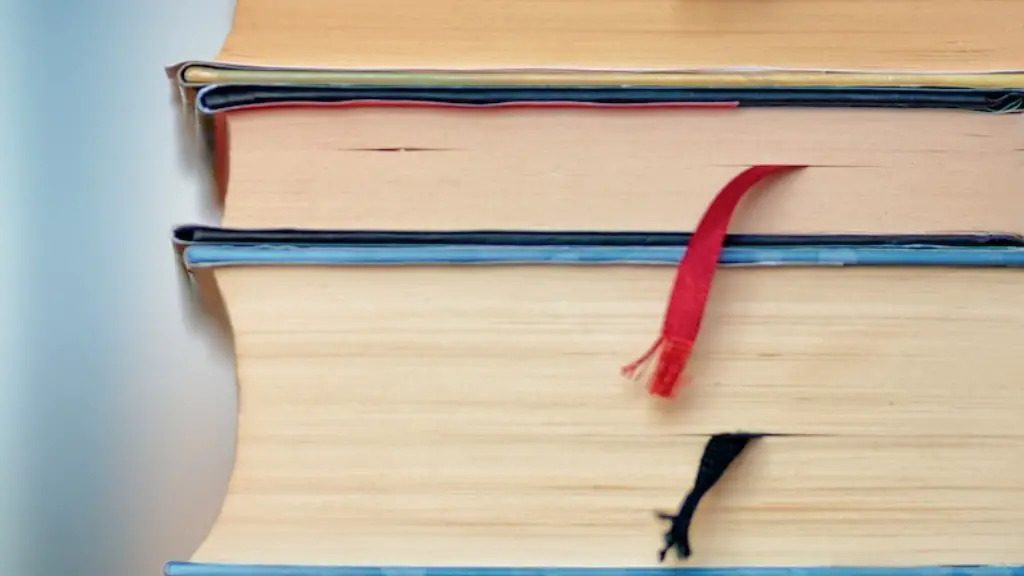Understanding Poetic Language
Poetry often combines a variety of language styles and rhythms in order to create a new meaning from the combination of words. A poem can evoke emotion in a way that other forms of writing cannot. To understand what a poem is saying, it is important to consider the poem’s structure and language.
The structure of a poem can reveal its message. For example, the rhyme scheme, the length of the lines, and the number of lines can provide an indication of what the poem will express. It can also help shape how the poem reads.
Language also communicates a poem’s meaning. Words can evoke a range of emotions and imagery in the reader. Furthermore, poets use a range of language devices, such as alliteration, Personification, Similes, Metaphors, and Onomatopoeia. Metaphors draw a comparison between two objects, Personification assigns human qualities to non-living things and Onomatopoeia helps to produce an effect of movement and sound.
Analyzing A Poem
Reading poetry requires more than just reading the words; it requires an understanding of the poem’s context, its ideas and its deeper meaning. Taking the time to analyze a poem is an essential part of understanding poetry.
The first step in analyzing a poem is to start by focusing on the words. Consider the words that the poet has chosen and what feelings or images they might evoke. Pay attention to any metaphors or alliteration, as these elements can provide insight into the poem’s meaning.
Next, consider the poem’s structure. Observe the form, the syllables and the lines in the poem. This can help to provide insight into the poem’s mood, tone, and theme.
Finally, read the poem several times and consider the overall message that it conveys. Ask yourself, what is the poem about? What feelings and ideas does it express?
Exploring Poems
Exploring poems can be a great way to learn more about the craft of poetry and get in touch with the poet’s voice. You can explore a poem either by writing a response to it or by examining how it reflects a certain theme or subject.
When writing a response to a poem, consider what you admire and appreciate about the poem. What images or words stood out to you? What did the poem make you think or feel? Do the poem’s words fit together in any special way or take on a different meaning?
You can also explore a poem by asking yourself how it reflects a certain theme or subject. What points does the poem make about the theme or subject? Does the poem challenge any assumptions about these themes and topics?
Interpreting Poems
Interpreting poetry requires an understanding of the poem and its context. Think about what the poet is trying to express in the poem and look for clues in the language and structure. Context can also provide insight into the poem’s meaning.
When reading a poem, consider the poem’s context. Are there any historical or cultural references that the poet is drawing on? Are there any underlying messages in the poem? Consider the mood, language, and imagery and how they relate to the overall message of the poem.
The ultimate goal of interpreting a poem is to understand its deeper meaning. While the literal or surface meaning is clear, the message or emotion at its core can be less obvious. A poet’s words can often be read in a variety of ways, so don’t be afraid to explore other interpretations of the poem.
Discussing Poetry
Discussing poetry is a great way to explore its themes and depth, while also fostering a deeper understanding of the poem. Try talking to a friend or family member about the poem and discussing your interpretations and reactions to it.
Discussing poetry allows you to gain insight into the poem and its deeper message. Consider the poet’s voice, the imagery and the emotion expressed in the poem. These elements can help to reveal what the poem is about.
Additionally, discussing poetry can foster a deeper appreciation for the poem. Talk about what stands out to you in the poem and what ideas you find interesting. It can be a great way to gain a fuller understanding of the poem and appreciate its beauty and complexity.
Writing About Poetry
Writing about poetry is another great way to explore and interpret its meaning. Writing helps you to clarify and express your thoughts and interpretations of the poem. It can be a great way to understand and appreciate the poem’s craft.
When writing about a poem, consider its literary elements, such as its imagery and language. Analyze how these elements contribute to the poem’s meaning and how they evoke certain emotions in the reader.
Delve further into the poem’s deeper message, explore its themes and consider what it says about the poet and the human condition. Writing about poetry can help to enhance your appreciation of the poem and give you a greater understanding of its beauty and power.
Sharing Poetry
Sharing poetry is a great way to explore the power of words and engage with a poem’s message. Share a poem with a friend or family member and talk about your interpretations and reactions to it.
Discussing poetry allows others to gain insight into the poem’s meaning and share their thoughts and feelings about it. Sharing poems can also help to spread a message of love, understanding and compassion.
Additionally, reading poems aloud can be a powerful way to connect with the poem. Reading a poem aloud gives the words a voice and brings them to life in a way that simply reading them on paper cannot.
Finding Hidden Messages
Poetry can often contain hidden meanings and messages, which can be difficult to uncover. Finding these hidden messages and understanding their meaning is often an essential part of appreciating and interpreting a poem.
When attempting to uncover a poem’s hidden messages and meanings, look for words and images that seem out of place. This can help to provide insight into the poem’s deeper meaning.
Additionally, consider the poem’s context. Are there any underlying themes or cultural references that can help to shed light on the poem’s hidden message?
Considering Visual Elements
The visual elements of a poem can provide insight into its meaning and deepen a reader’s understanding of it. Look at how the words are arranged on the page and consider how they contribute to the poem’s overall message.
Pay attention to any special formatting or punctuation that the poet has used. These can provide clues about the poem’s message and reveal something about the poet’s thinking behind the words.
Additionally, consider the poem’s placement on the page. Where is it placed? Does the placement of the words suggest something about the poem’s meaning? Exploring the visual elements of the poem can help to uncover hidden messages and enhance your appreciation of it.


